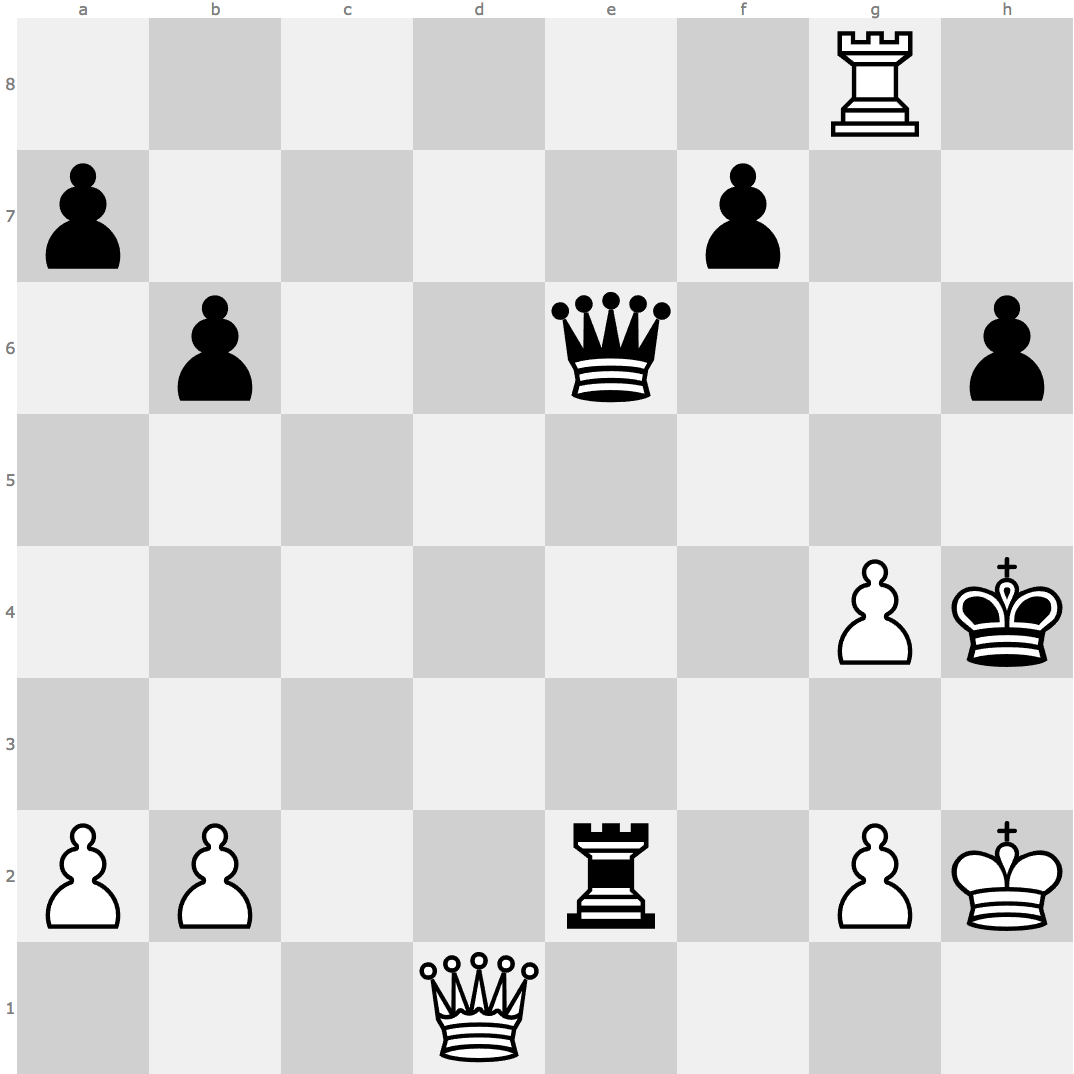What a weird position!
Logic
Level
3

It is currently white to move. In how many moves will white successfully checkmate black, assuming both play optimally?
Mate in 1
Mate in 2
Mate in 3
Mate in 4
This section requires Javascript.
You are seeing this because something didn't load right. We suggest you, (a) try
refreshing the page, (b) enabling javascript if it is disabled on your browser and,
finally, (c)
loading the
non-javascript version of this page
. We're sorry about the hassle.
Qe1+! Rxe1
g3#
This position was in Stahlberg vs Becker 1944.
Alternatively, Black can move their rook to f2 to get
... Rf2
Qxf2#